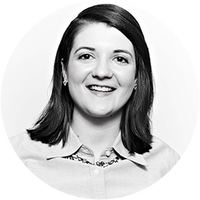The 'man in the moon' may have been created by a massive volcano


The "man in the moon," a.k.a. the moon's 1,800-mile feature, Oceanus Procellarum, may have been formed by a massive volcano, new research suggests.
Scientists used data from NASA's Gravity Recovery and Interior Laboratory (GRAIL) spacecrafts in a new study, published in the journal Nature. The researchers' findings serve as "compelling evidence" that the moon's feature "was formed in the wake of a mega volcanic eruption and not the location of a massive asteroid strike," as was previously thought, Discovery News reports.
The data from GRAIL, whose mission was conducted in 2012, led geophysicist Maria Zuber from MIT to discover that the Procellarum basin is a polygon, rather than an oval shape, as is common for asteroid-caused craters.
The Week
Escape your echo chamber. Get the facts behind the news, plus analysis from multiple perspectives.

Sign up for The Week's Free Newsletters
From our morning news briefing to a weekly Good News Newsletter, get the best of The Week delivered directly to your inbox.
From our morning news briefing to a weekly Good News Newsletter, get the best of The Week delivered directly to your inbox.
Zuber's research team determined that the basin's rock density suggested a "massive lava flow" rather than a "massive asteroid strike," Discovery News notes. The two GRAIL spacecrafts found that denser rock caused the moon's gravitational field to increase, which provided the researchers with information about the Procellarum basin's rock density. Zuber's team simulated volcanic intrusions and found that the structure beneath the basin exhibited a similar rock density.
The team concluded that after the moon was formed, molten rock was forced out of the moon's interior. This, in turn, created the basin as the moon's crust was fractured and its surface contracted as the magma escaped. But even though the basin may not have been the result of an asteroid's impact, the team hasn't ruled out the possibility that the magma plume was caused by an asteroid hitting the moon.
"How such a plume arose remains a mystery," Zuber told Discovery News. "It could be due to radioactive decay of heat-producing elements in the deep interior. Or, conceivably, a very early large impact triggered the plume. But in the latter case, all evidence for such an impact has been completely erased. People who thought that all this volcanism was related to a gigantic impact need to go back and think some more about that."
A free daily email with the biggest news stories of the day – and the best features from TheWeek.com
Meghan DeMaria is a staff writer at TheWeek.com. She has previously worked for USA Today and Marie Claire.
-
 Blue Origin launches Mars probes in NASA debut
Blue Origin launches Mars probes in NASA debutSpeed Read The New Glenn rocket is carrying small twin spacecraft toward Mars as part of NASA’s Escapade mission
-
 Dinosaurs were thriving before asteroid, study finds
Dinosaurs were thriving before asteroid, study findsSpeed Read The dinosaurs would not have gone extinct if not for the asteroid
-
 SpaceX breaks Starship losing streak in 10th test
SpaceX breaks Starship losing streak in 10th testspeed read The Starship rocket's test flight was largely successful, deploying eight dummy satellites during its hour in space
-
 Rabbits with 'horns' sighted across Colorado
Rabbits with 'horns' sighted across Coloradospeed read These creatures are infected with the 'mostly harmless' Shope papilloma virus
-
 Lithium shows promise in Alzheimer's study
Lithium shows promise in Alzheimer's studySpeed Read Potential new treatments could use small amounts of the common metal
-
 Scientists discover cause of massive sea star die-off
Scientists discover cause of massive sea star die-offSpeed Read A bacteria related to cholera has been found responsible for the deaths of more than 5 billion sea stars
-
 'Thriving' ecosystem found 30,000 feet undersea
'Thriving' ecosystem found 30,000 feet underseaSpeed Read Researchers discovered communities of creatures living in frigid, pitch-black waters under high pressure
-
 New York plans first nuclear plant in 36 years
New York plans first nuclear plant in 36 yearsSpeed Read The plant, to be constructed somewhere in upstate New York, will produce enough energy to power a million homes


